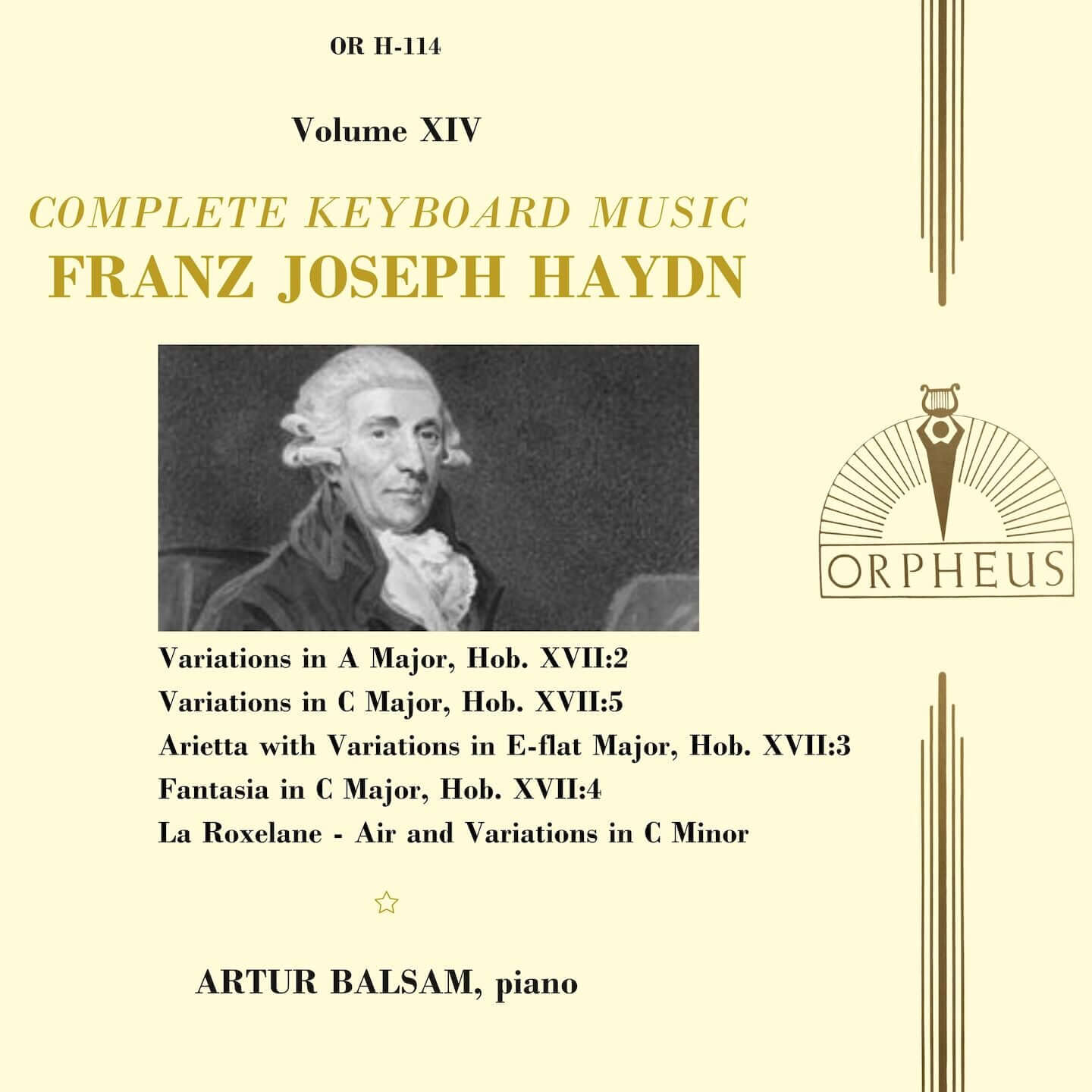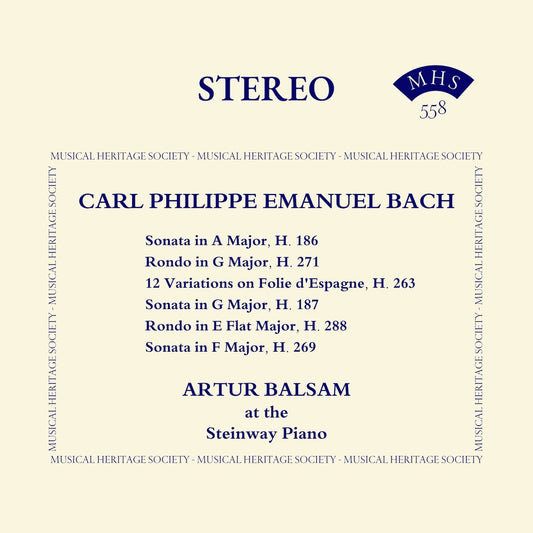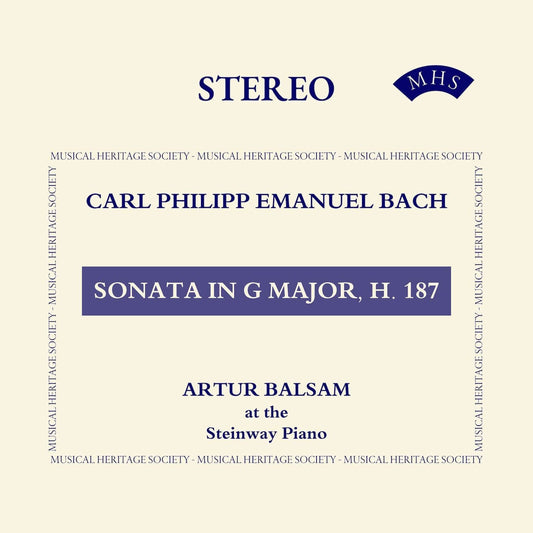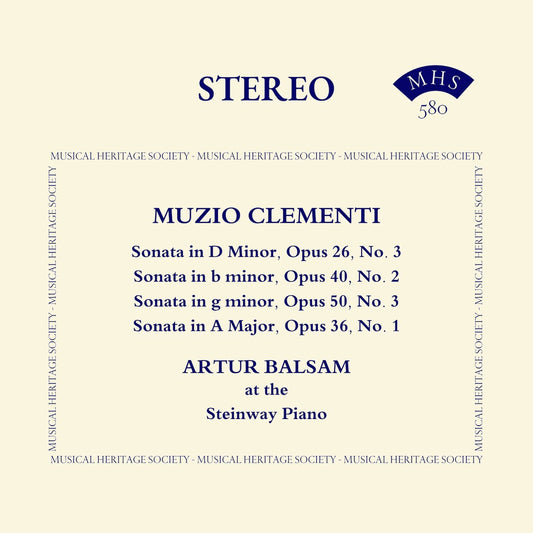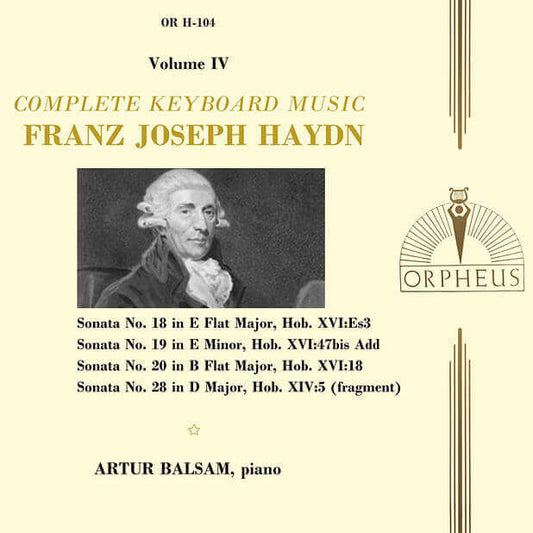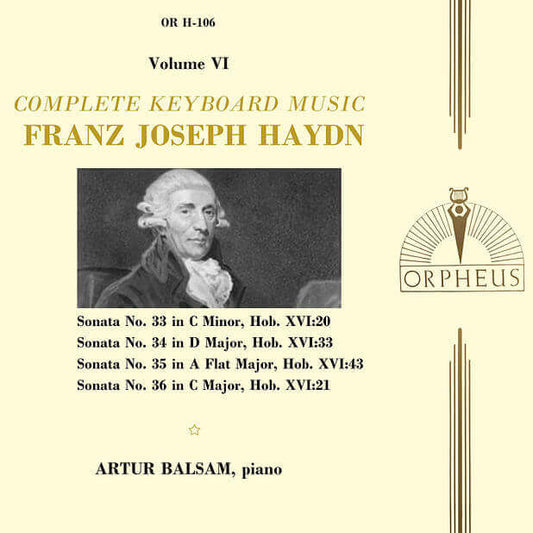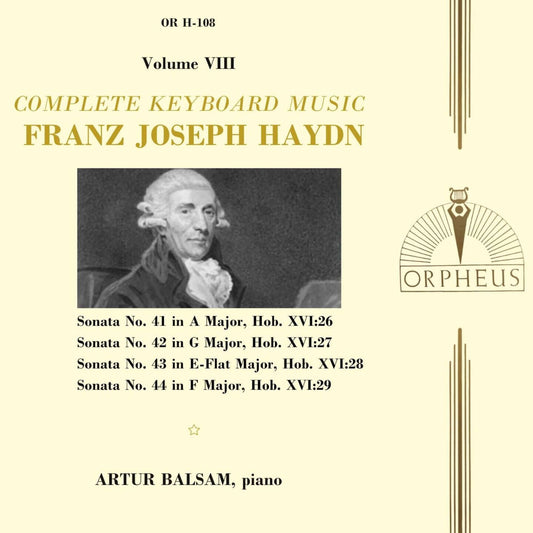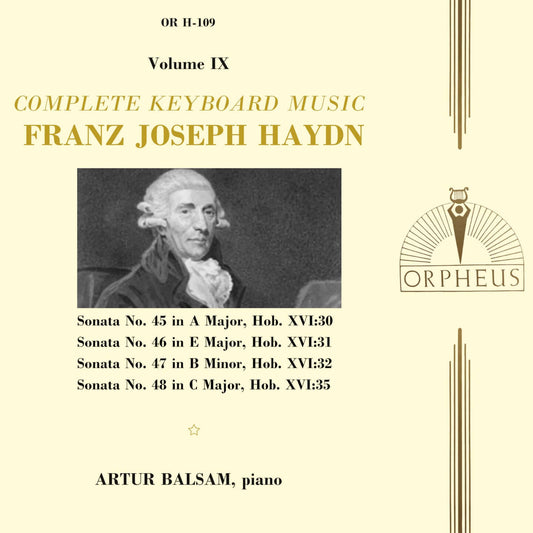1
/
of
1
ARTUR BALSAM: HIS MUSICAL HERITAGE SOCIETY RECORDINGS
Haydn: Complete Keyboard Music, Vol. 14 - Artur Balsam
Haydn: Complete Keyboard Music, Vol. 14 - Artur Balsam
Regular price
$7.98
Regular price
$7.98
Sale price
$7.98
Unit price
/
per
$3.99
MHS
DIGITAL DOWNLOAD with LINER NOTES
play_circle_outline
Variations in A Major, Hob. XVII:2
16:20
add_shopping_cart
$0.99
play_circle_outline
Variations in C Major, Hob. XVII:5
7:46
add_shopping_cart
$0.99
play_circle_outline
Arietta with Variations in E-flat Major, Hob. XVII:3
14:20
add_shopping_cart
$0.99
play_circle_outline
Fantasia in C Major, Hob. XVII:4
5:44
add_shopping_cart
$0.99
play_circle_outline
La Roxelane - Air and Variations in C Minor
5:22
add_shopping_cart
$0.99
The Arietta and Variations in A date from 1771. The theme is of the simplest sort; over nineteen variations makes this piece an intriguing study of the variation form. Of particular interest are: the eighth variation, with the clever use of a one-eighth and two-sixteenth note figure, and a few syncopated beats. No. 11, with chromatically moving thirds in the right hand played over left hand octaves: No. 15, with broken chords and No. 17, where a descending bass line, played by the left hand, accompanies the tune, now fragmented into 'snap" (sixteenth-note followed by a dotted eighth-note) figures. The Theme and Variations in C was completed within eight days -- all the time Haydn had to write it for the publisher Artaria, before leaving Vienna for England on December 15, 1790. During the course of the six variations which make up this work, Haydn increases the elaboration of the theme pleasantly, if rather conventionally; one assumes he had the musical amateur in mind for this simple piece. The Arietta and Variations in E flat, written in 1774, has an advantage over some of Haydn's other variation sets, by containing a sublime theme. The melody radiates a lambent loveliness, matched only by those of his younger colleague, Mozart. The variations, happily, are the equal of the exquisite melody, by their originality and endless delights and surprises. The eleventh variation, with its decisive wide right hand reaches, is perhaps the most interesting of all these interesting variations. The Fantasia in C, Karl Geiringer tells us in his book, Haydn, was written by a master who exploited the possibilities of piano technique in transcribing ideas of an essentially orchestral nature." What we have is a colorful and humor-filled exploitation of several short themes. The work was composed in 1789, at about the same time as another, and thoroughly different excursion into fancy, the remarkable Sonata number 58, in C. The charming theme for the variations is probably an old French melody. During the visit to Esterház, in 1777, of a theatrical troupe offering a French play, "Les trois sultanes," Haydn assembled incidental music for the play. He also wrote a set of double variations on the present melody to depict the character of the female lead in the drama; this was La Roxelane, "the Russian girl," the slave to-empress heroine of a shades-of-Scheherazade script.
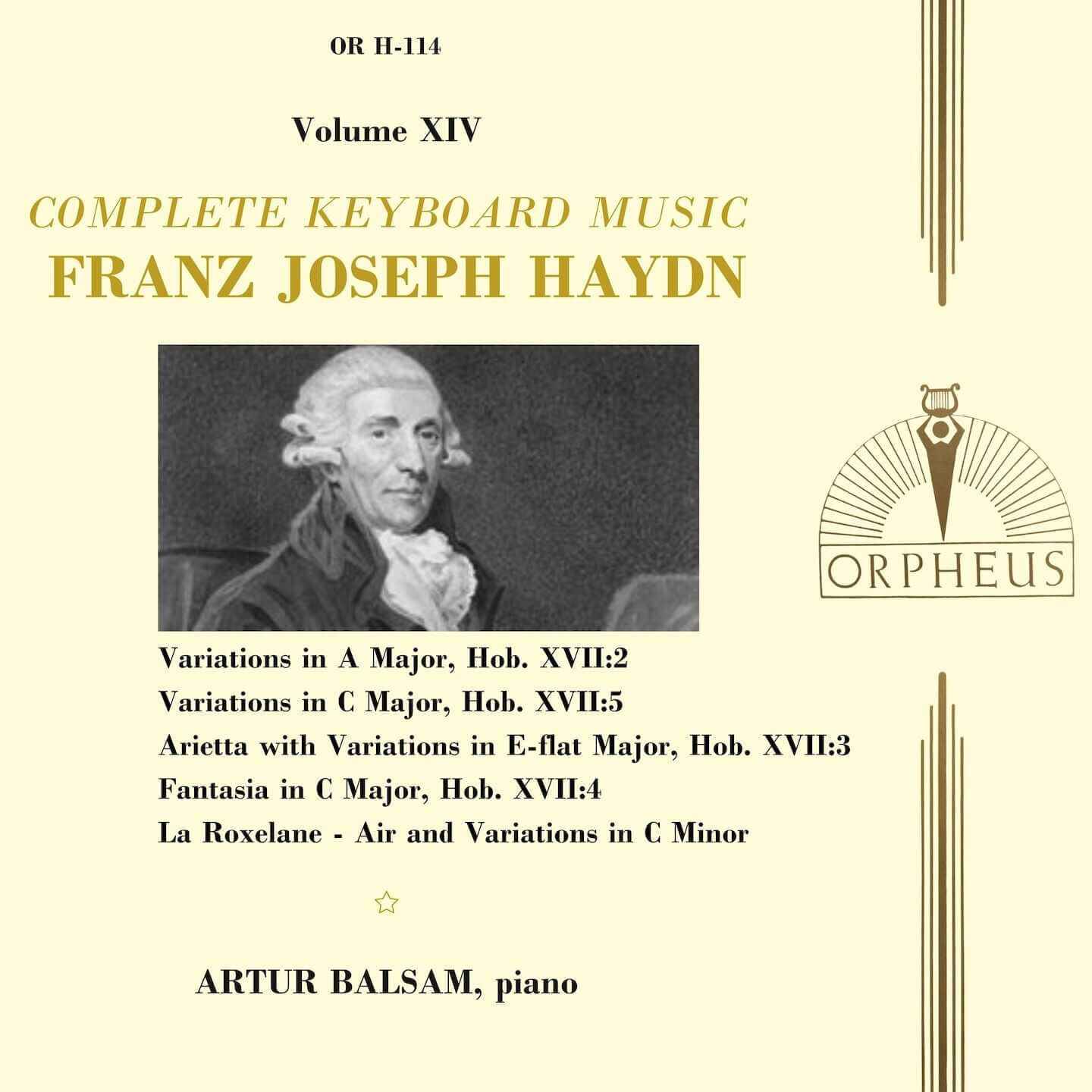

Performers
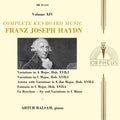
00:00
/
00:00
•
skip_previous
play_circle_outline
pause_circle_outline
skip_next
Also Available from ARTUR BALSAM: HIS MUSICAL HERITAGE SOCIETY RECORDINGS
-
Members Save 50% DIGITAL DOWNLOAD with LINER NOTES
BACH, CARL PHILIPP EMANUEL: Keyboard Works - Artur Balsam
ExploreRegular price $9.99Regular priceUnit price / per$9.99Sale price $9.99 -
Members Save 50% DIGITAL DOWNLOAD with LINER NOTES
BACH, CARL PHILIPP EMANUEL: Sonata in G Major, H. 187 - A...
ExploreRegular price $2.99Regular priceUnit price / per$2.99Sale price $2.99 -
Members Save 50% DIGITAL DOWNLOAD with LINER NOTES
CLEMENTI: FOUR PIANO SONATAS - Artur Balsam
ExploreRegular price $9.99Regular priceUnit price / per$9.99Sale price $9.99 -
Members Save 50% MHS EXCLUSIVE DIGITAL DOWNLOAD
HAYDN: 10 GREAT PIANO SONATAS (from The MHS Complete Hayd...
ExploreRegular price $9.99Regular priceUnit price / per$9.99Sale price $9.99 -
STREAMING
Haydn: Complete Keyboard Music, Vol. 01 - Artur Balsam
ExploreRegular price $0.00Regular priceUnit price / per -
STREAMING
Haydn: Complete Keyboard Music, Vol. 02 - Artur Balsam
ExploreRegular price $0.00Regular priceUnit price / per -
STREAMING
Haydn: Complete Keyboard Music, Vol. 03 - Artur Balsam
ExploreRegular price $0.00Regular priceUnit price / per -
STREAMING
Haydn: Complete Keyboard Music, Vol. 04 - Artur Balsam
ExploreRegular price $0.00Regular priceUnit price / per -
STREAMING
Haydn: Complete Keyboard Music, Vol. 05 - Artur Balsam
ExploreRegular price $0.00Regular priceUnit price / per -
STREAMING
Haydn: Complete Keyboard Music, Vol. 06 - Artur Balsam
ExploreRegular price $0.00Regular priceUnit price / per -
Members Save 50% DIGITAL DOWNLOAD with LINER NOTES
Haydn: Complete Keyboard Music, Vol. 08 - Artur Balsam
ExploreRegular price $9.98Regular priceUnit price / per$9.98Sale price $9.98 -
Members Save 50% DIGITAL DOWNLOAD with LINER NOTES
Haydn: Complete Keyboard Music, Vol. 09 - Artur Balsam
ExploreRegular price $7.98Regular priceUnit price / per$7.98Sale price $7.98

